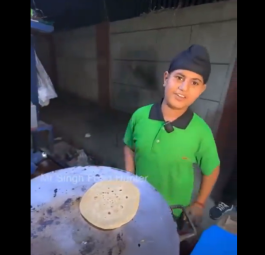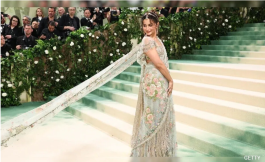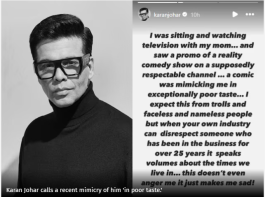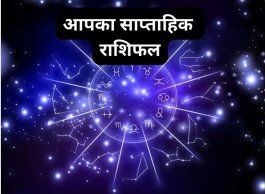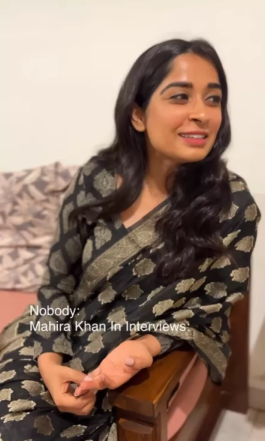Ghazal in short, is a collection of Sher's which follow the rules of
'Matla', 'Maqta', 'Beher', 'Kaafiyaa' and 'Radif'. So to know what
Ghazal is, it's necessary to know what these terms mean.
To understand these terms easily , we will take an example.
1. koi ummid bar nahin aati
koi surat nazar nahin aati
2. aage aati thi haale dil par hasi
ab kisi baat par nahin aati
3. hum wahan hain, jahan se humko bhi
kucch hamaari khabar nahin aati
4. kaabaa kis muh se jaaoge 'Ghalib'
sharm tumko magar nahin aati
What is a Sher ?
It's a poem of two lines. This definition is deceptively simple.
Please note that, every Sher is a poem in itself ! A Sher does not
need, anything around it, to convey the message.
All the 4 stanzas in our example are independent poems, Sher's.
So Ghazal is necessarily a collection of two-line-poems called Sher.
[ So the Rafi solo "rang aur noor ki baaraat kise pesh karu" is NOT
a Ghazal, as every stanza is of 3 lines, and not 2. ]
What are other restrictions ? Many, and important ones.
[ Any collection of Sher's is not Ghazal. Some good examples are ; the
famous Mukesh song from Yehoodi, "yeh mera deewaanaapan hai" ; and thetitle song of "dil apana aur preet parayi". Each stanza in these songs
can be considered as an independent Sher, but they are NOT Ghazal's.
To understand, why, we have to wait till 'Kaafiyaa, 'Radif'. ]
What is 'Beher' ?
'Beher' is the 'meter' of the Sher's. It can be considered as the
length of the Sher. Both the lines in the Sher *MUST* be of
same 'Beher'. And all the Sher's in one Ghazal *MUST* be of the
same 'Beher'. There are 19 (!!) kinds of 'Beher'. But in simple terms,
'Beher' is categorized in 3 classes. Short, medium, long.
[ The examples in [] are my additions, from Hindi Films. ]
Small :
ahale dairo-haram reh gaye
tere deewane kam reh gaye
[ Also Talat song, "dil-e-nadan tuze hua kya hai" ]
Medium :
umr jalwo me basar ho, ye zaruri to nahin har shab-e-gam ki seher ho, ye zaruri to nahin [ And by Gulzar, "ruke ruke se kadam, ruk ke baar baar chale" ]
Long :
ai mere humnashin, chal kahin aur chal, is chaman me ab apanaa guzaaraa nahin baat hoti gulon ki, to seh lete hum, ab to kaaton pe bhi haq hamaaraa nahin
[ The filmfare winner, "Manzile apani jagah hai" !! Yes ! It IS a Ghazal.
And the Shayar is Prakash Mehra !! surprise , surprise !! ]
So Ghazal is a collection of Sher's of SAME 'Beher'.
What is 'Radif' ?
In a Ghazal, second line of all the Sher's *MUST* end with the *SAME*
word/s. This repeating common words is the 'Radif' of the Ghazal.
In our example, the 'Radif' is "nahin aati".
[ Sometimes, the Ghazal becomes known by its 'Radif'. eg. "zaraa
aahista chal" sung by Pankaj Udhas. On RMIM we all know one Ghazal by
the 'Radif' as "aahista aahista", don't we ? or is it 2 or 3 ? ![]() ]
]
What is 'Kaafiyaa' ?
'Kaafiyaa' is the rhyming pattern which all the words before 'Radif'
*MUST* have.
In our example the 'Kaafiyaa' is "bar", "nazar", "par", "magar" etc.
This is a necessary requirement. Something which is followed even in
the exceptions to all these rules.
So Ghazal is a collection of Sher's of same 'Beher', ending in same
'Radif' and having same 'Kaafiyaa'.
[ That's the reason, why "yeh mera diwanapan hai" etc. are NOT Ghazals.
There is no common thing which can be called 'Kaafiyaa' and 'Radif'. ]
What is 'Matla' ?
The first Sher in the Ghazal *MUST* have 'Radif' in its both lines.
This Sher is called 'Matla' of the Ghazal and the Ghazal is usually
known after its 'Matla'. There can be more than one 'Matla' in a
Ghazal. In such a case the second one is called 'Matla-e-saani' or
'Husn-e-matla'.
In our example, the first Sher is the 'Matla'.
What is 'Maqta' ?
A Shayar usually has an alias ie. 'takhallus' eg. Mirza Asadullakhan
used 'Ghalib' as his 'takhallus' and is known by that. Other examples
are 'Daag' Dehlvi, 'Mir' Taqi Mir, Said 'Rahi', Ahmed 'Faraz' etc.
There is a Sher in a Ghazal, the last one, which has the Shayar's
'takhallus' in it.
[ A Shayar, can use the 'Maqta' very intelligently. He can "talk to
himself" like one in our example. I have lots of favourite Sher's
which are 'Maqta' of some Ghazal. Some gems are
koi nam-o-nishan puchhe to ai kaasid bataa denaa, takhallus 'Daag' hai, aur aahiqon ke dil me rehte hai and
jab bhi milte hain, to kehte hain, "kaise ho 'Shakil'", iske aage to koi baat nahin hoti hai
The first one uses the meaning of the 'takhallus' to create the
magic, and the second one is just simple, simply beautiful. ]
To summarize, Ghazal is a collection of Sher's (independent two-line
poems), in which there is atleast one 'Matla', one 'Maqta' and all
the Sher's are of same 'Beher' and have the same 'Kaafiyaa' and
'Radif'.
EXCEPTIONS AND IMP. POINTS TO NOTE
==================================
1. Ghazal is just a form. It is independent of any language.
eg. in Marathi also, there can be (and there are) good Ghazals.
2. Some Ghazal's do NOT have any 'Radif'. Rarely. Such Ghazal's
are called "gair-muraddaf" Ghazal.
3. Although, every Sher, should be an independent poem in itself,
it is possible, that all the Sher's are on the same theme. What
famous example can be other than "chupke chupke raat din aasun
bahaanaa yaad hai".
4. In modern Urdu poetry, there are lots of Ghazal's which do
NOT follow the restriction of same 'Beher' on both the lines
of Sher. [ My example in 'Maqta', the Sher by Shakil, is one. ]
But even in these Ghazal's, 'Kaafiyaa' and 'Radif' are present.
5. The restriction of 'Maqta' is really very loose. Many many
Ghazal's do NOT have any 'Maqta'. [ I think 'Maqta' was used in
the earlier times, as a way to keep the credit. But since this is
traditional, many Ghazal's do have a 'Maqta' just for the sake of it.
Sometimes the name of the Shayar comes unnaturally in the last
Sher of the Ghazal. ]
